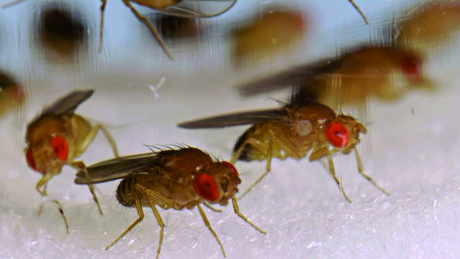New genes discovered on the Y chromosome

Geneticists from the University of Veterinary Medicine, Vienna (Vetmeduni Vienna) have made a crucial breakthrough decoding the Y chromosome, which has been a tough nut to crack for genomics researchers. Published in the Proceedings of the National Academy of Sciences, their findings will offer new momentum for further research into the male chromosome.
Y chromosomes, which are only inherited paternally, evolved from ‘normal’ chromosomes known as autosomes. As males only possess one Y chromosome, there is no counterpart for recombination, the direct exchange of genetic material. This makes the deletion of harmful mutations on the Y chromosome more difficult than in other chromosomes. As a result, genes on the Y chromosome usually undergo a process of degeneration.
Among evolutionary biologists, the question as to which genes lie on the male sex chromosome and where they came from is therefore hotly debated. Studies in fruit flies have shown that new genes can be transferred onto the chromosome, although the rate has been estimated as very low (one transfer in 10 million years). The chromosome also possesses only a few functional genes, and these are embedded in repetitive DNA that is difficult to analyse.
“Only seven functional genes have been identified on the Y chromosome of [fruit fly] Drosophila melanogaster,” said Ray Tobler, first author on the new study. “But we suspect that the number of functional genes as well as the actual transfer rate must be higher. We therefore developed a new analysis method that allows us to efficiently search for gene transfers onto the Y chromosome, so-called GeTYs.”
The researchers’ method consisted of sequencing the genome of males and females from a so-called inbred strain of fruit flies. These differ only in the Y chromosome sequence.
“The key to our results was to search for variants in the males that do not exist among the females,” said Tobler. “That means we worked without any known Y chromosome sequences that would usually be used for a comparison. This allowed us to trace the transferred genes back to so-called retrocopies, which are created when the RNA transcript of a gene is inserted into the Y chromosome.”
The researchers discovered that gene traffic onto the Drosophila Y chromosome is 10 times more frequent than previously suspected, in many cases being transferred to the Y chromosome from other chromosomes. They found that at least 25 gene transfers have arisen across three Drosophila species over the past 5.4 million years (1.67 per million years for each lineage), with senior author Christian Schlötterer noting, “The high number of validated gene transfers allowed us to statistically show that there were differences between Drosophila species.”
All previously described gene transfers onto the Y chromosome had involved the transfer of a piece of the chromosome and not an RNA transcript. This is no longer the case, said Schlötterer, stating, “We only found genes originating from an RNA transcript in the closely related D. mauritiana and D. simulans, which suggests that the transfer mechanisms are species-specific.”
Although these transfers largely occur as a result of ‘accidents’, according to the researchers, some have resulted in the creation of functional genes on the Y chromosome. Indeed, the team has discovered that four of the 25 newly transferred genes on the Y chromosome have already assumed an important function there.
“As these new genes can be found in all individuals of a species, the question arises as to which functions these new Y-linked genes could have,” said Tobler.
Until now, it has been completely unclear if and how long these new genes can withstand the deterioration of the Y chromosome. As the new analysis method does not require a reference genome for the Y chromosome, it offers enormous potential to study the dynamics of new genes on the Y chromosome in many different species.
“I expect many more exciting findings,” said Schlötterer.
Mini lung organoids could help test new treatments
Scientists have developed a simple method for automated the manufacturing of lung organoids...
Clogged 'drains' in the brain an early sign of Alzheimer’s
'Drains' in the brain, responsible for clearing toxic waste in the organ, tend to get...
World's oldest known RNA extracted from woolly mammoth
The RNA sequences are understood to be the oldest ever recovered, coming from mammoth tissue...



